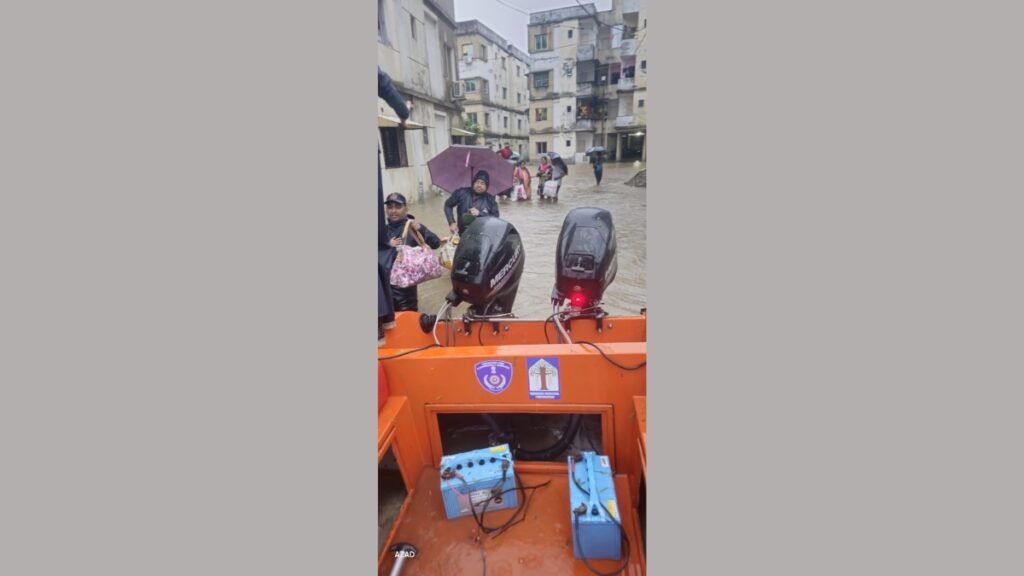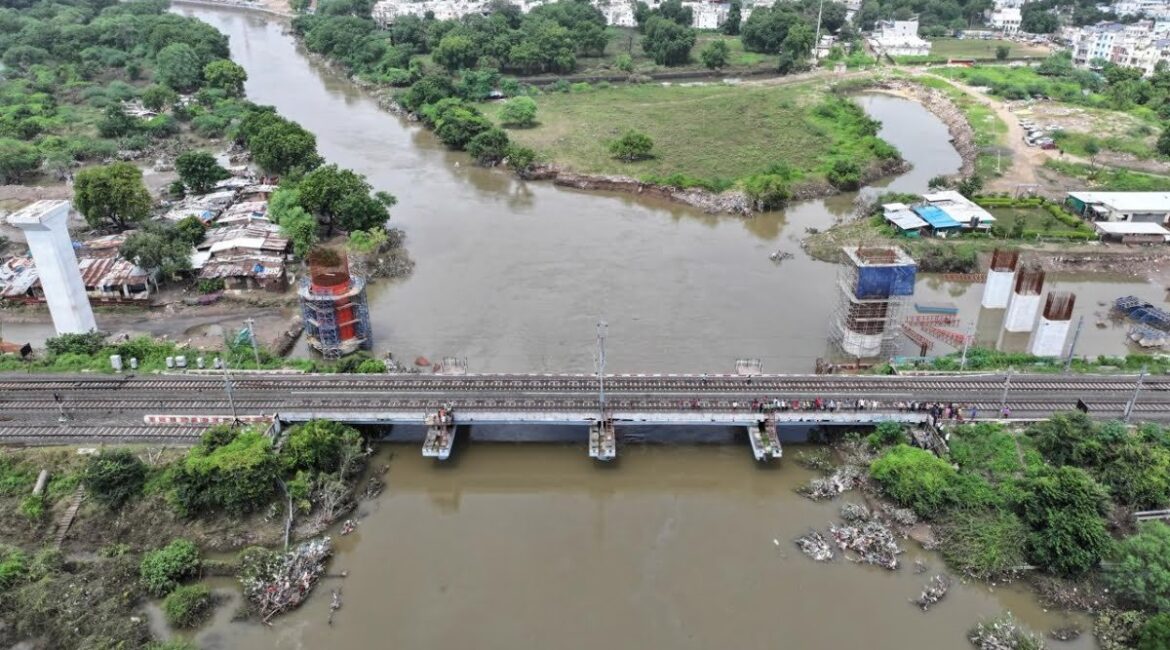Vadodara (Gujarat) [India], September 04: Recently, the water from the Vishwamitri River once again entered Vadodara city, submerging several areas for about two days. Naturally, people are angry, having spent hours in water without essential supplies, and then facing extensive property damage. Residents claim that the water level this time was unprecedented, with areas that had never seen flooding before now being inundated. This raises several questions: Could this flood have been prevented? Because now, on social media, various arguments, pictures, and graphics are going viral, suggesting that the flood in Vishwamitri was man-made.
The first argument is that the flood management by the authorities in Vadodara was not adequate. In other words, water was released from Ajwa Dam and Pratapura Dam without any reason, leading to the submergence of Vadodara city. This perception has become common, but to understand the reality, we need to look at the data.
Flooding in Vadodara has always occurred when there is heavy rainfall in the catchment areas of the Vishwamitri River and the two dams, Ajwa and Pratapura. Whether it was in 2005, 2019, or the situation a month ago in July 2024, I have personally observed these situations. So, why did the situation worsen so much this time? Could it really have been prevented? Did the authorities truly do nothing?
Let’s look at some data:
Firstly, regarding Pratapura Dam, as its water directly flows into the Vishwamitri River—when did water start entering Vadodara? It began on the morning of August 27 at 3 a.m., at which time the level of Pratapura Dam was 233 feet, 8 feet above its rule level of 225 feet. So, had the authorities already stored water above the rule level in the dam and then suddenly released it? What actually happened? The gates on Pratapura Dam are installed at 222 feet, meaning water can only be released after the dam reaches this level. Now, what was the sequence of events?
When heavy rainfall was forecasted for the region on August 23, the dam level was 222.15 feet in the morning, which was quite low compared to the rule level of 225 feet for August 15-30. Still, the corporation started discharging water, as three weather systems were active, and the Vishwamitri level was only 7 feet. Rain began in the region on August 25, and despite continuous water discharge, the dam’s level reached 230 feet by the evening of August 26. When water entered the city on August 27, the Pratapura level was 233 feet, despite all gates being open (even though the rainfall had stopped on the evening of the 26th, it takes time for the inflow to cease).

Now, let’s talk about Ajwa Dam:
On August 23, the Ajwa Dam level was 211.05 feet (according to the rule level, the Ajwa level should be maintained at 212 feet between August 15-30). After rainfall began in the catchment area on August 24, the dam level reached 211.65 feet, while the Vishwamitri level in Vadodara was just 15 feet. Despite this, the corporation opened the gates of Ajwa due to the heavy rainfall forecast, to maintain buffer space in the dam. (It is worth noting that the gates of Ajwa are installed at 211 feet, meaning any water management is only possible after this level.) Now, on August 25-26, more than 13 inches of rainfall occurred in the Ajwa catchment area, causing the level to rise from 212 feet to 214.85 feet within just 7 hours, despite the gates being open. Additionally, 13 inches of rainfall occurred in the Vadodara city and taluka areas within the same period, causing the Vishwamitri level to rise to over 35 feet, surpassing its peak measurement level by 3-4 feet.
As the rainfall began to decrease in the region from the evening of August 26, the levels of Ajwa and Pratapura dams started to gradually decrease from the afternoon of August 27. At 8 p.m., the Municipal Commissioner took a calculated risk by closing the gates of Ajwa at 213.65 feet (as Ajwa cannot be closed before 213.85 feet, since its gates automatically open at this level for dam safety) and Pratapura at 230 feet, hoping that there would be no more rain in the next 24 hours and the inflow would decrease, so that the dams wouldn’t have to be reopened. Technically, according to the rule level, the gates of both dams should not have been closed, but if they had remained open, water would still be entering Vadodara city today. Just imagine how much water volume there must have been that it took 12-14 hours after closing the gates for the water to start receding in Vadodara. Therefore, the claim that the gates of both dams were suddenly opened is completely false—the gates had been opened 72-100 hours before the flood occurred. We must understand the situation—it’s the end of the season, all reservoirs are fully stocked, and even a little rain now can pose a threat. Vadodara faced a cloudburst-like situation.
Was there really no flood warning issued?
In my investigation, I found a video in which people are being requested to move to safer locations on August 26 itself. Surprisingly, this video is from the famous Siddharth Bungalow in Vadodara, where the corporation repeatedly urged people to move to safer places 10 hours before water entered the city. The most shocking fact is that the corporation had even deployed buses to transport people from this society and several other areas to safer places, but people were unwilling to leave their homes. In many places, people were seen mocking the officials who came to advise them to move to safer locations, only to later claim that rescue efforts were inadequate. This claim is also not entirely true, as efforts were made; however, due to the scale of the disaster, there might have been delays in reaching some places.
Last but not least,
There was also misinformation spread on social media that the corporation had boats but did not use them. The reality is that these boats were condemned and had been discarded. After investigating, I found that misinformation was spread without any verification, and everyone else simply latched onto it. For your information, let me tell you that in Vadodara, 190 firefighters, 4 NDRF teams, 3 SDRF teams, and 3 Army columns were involved in rescue and relief operations, in addition to the Air Force, which was also deployed for rescue and relief efforts.

